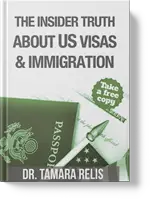For millions of immigrants, finding the right job in the United States is a central part of building a new life. But before you can legally work, you must have the proper authorization from the U.S. government. This isn’t just a formality; it’s a legal requirement that protects both workers and employers. Without work authorization, you risk losing job opportunities, facing immigration consequences, or even jeopardizing future visa or green card applications.
The rules around work authorization in the U.S. can be complex, especially in 2025, as immigration policies continue to evolve. Different visa types, humanitarian protections, and immigration statuses carry their own requirements and pathways to work authorization. Whether you are a student, an asylum seeker, a spouse of a visa holder, or a permanent resident waiting for your green card, understanding your rights and obligations is essential.
This article will break down who qualifies for work authorization, how to apply, and what to expect during the process so you can step into the U.S. workforce with confidence.
What Is Work Authorization?
Work authorization is official permission from the U.S. government for a noncitizen to work legally in the country. It is usually granted in the form of an Employment Authorization Document (EAD) a plastic card issued by U.S. Citizenship and Immigration Services (USCIS). In some cases, such as for lawful permanent residents or certain visa holders, work authorization is automatic and doesn’t require a separate EAD.
Who Qualifies for Work Authorization in 2025?
While eligibility rules are broad, the most common categories include:
- Asylum seekers and refugees: Individuals granted asylum or refugee status can apply for an EAD. Asylum seekers may be eligible after a set waiting period.
- Pending adjustment of status applicants: Those applying for a green card from within the U.S. can often apply for an EAD while their case is processed.
- Certain visa holders and their dependents: For example, spouses of E-2, L-1, or H-1B visa holders may qualify.
- DACA recipients: Individuals approved under the Deferred Action for Childhood Arrivals program can receive renewable work permits.
- Temporary Protected Status (TPS) holders: People from countries designated for TPS can apply for work authorization during their protected period.
Each category has specific eligibility criteria and timelines, so it’s important to confirm your situation before applying.
How to Apply for Work Authorization
Step 1: Determine Your Eligibility
Check the category under which you qualify. This will dictate the documentation you need and whether you must pay a filing fee.
Step 2: File Form I-765
Form I-765, Application for Employment Authorization, is submitted to USCIS along with the required evidence and applicable fees.
Step 3: Submit Supporting Documents
This may include proof of your current immigration status, identity documents, and any relevant USCIS notices or approvals.
Step 4: Wait for Processing
Processing times can range from a few weeks to several months, depending on your category and USCIS workload. Some applicants may qualify for expedited processing under urgent circumstances.
Validity and Renewal of Work Authorization
Most EADs are valid for one or two years, depending on your immigration status. To avoid gaps in your ability to work, it’s crucial to apply for renewal well before the expiration date. USCIS typically recommends filing a renewal application at least 180 days in advance.
Consequences of Working Without Authorization
Working without proper authorization can have serious consequences, including loss of immigration benefits, fines, or removal proceedings. It can also damage your credibility in future visa or green card applications.
Why Legal Guidance Matters for Work Authorization
While many applicants file for work authorization on their own, legal assistance can help avoid common pitfalls, such as incomplete forms, missing documents, or misunderstanding eligibility requirements. An immigration lawyer can also identify if you qualify for faster processing or if there are better long-term options for securing your right to work.
How Relis Law Helps Applicants Secure Work Authorization
At Relis Law, we review every case to confirm eligibility, prepare complete and accurate applications, and track deadlines to prevent gaps in employment. Whether you’re filing for the first time or renewing your EAD, we make the process straightforward and stress-free so you can focus on your career and future.
Your Career in the U.S. Starts with the Right Authorization
In 2025, legal work authorization remains one of the most important steps for immigrants looking to build a secure life in the United States. It’s not just about filling out a form it’s about protecting your status, your future opportunities, and your peace of mind.
By understanding your options and filing correctly from the start, you can avoid costly delays and step confidently into the workforce. At Relis Law, we’re here to guide you through the process, from determining eligibility to receiving your card and beyond.
FAQs
How long does it take to get work authorization?
Processing times vary by category but generally range from a few weeks to several months. Urgent cases may qualify for expedited processing.
Can I work while my renewal is pending?
In some categories, if you file your renewal on time, your work authorization may be automatically extended for a limited period. Always confirm with USCIS before working.
Do green card holders need an EAD?
No. Lawful permanent residents have automatic work authorization and do not need to apply for an EAD.
Dr. Tamara Relis
Latest posts by Dr. Tamara Relis (see all)
- Work Visa Lawyer - October 3, 2025



